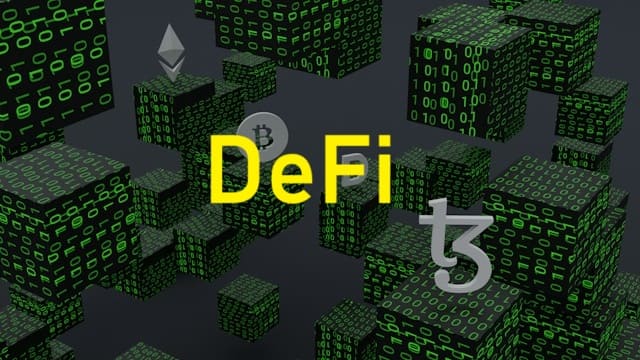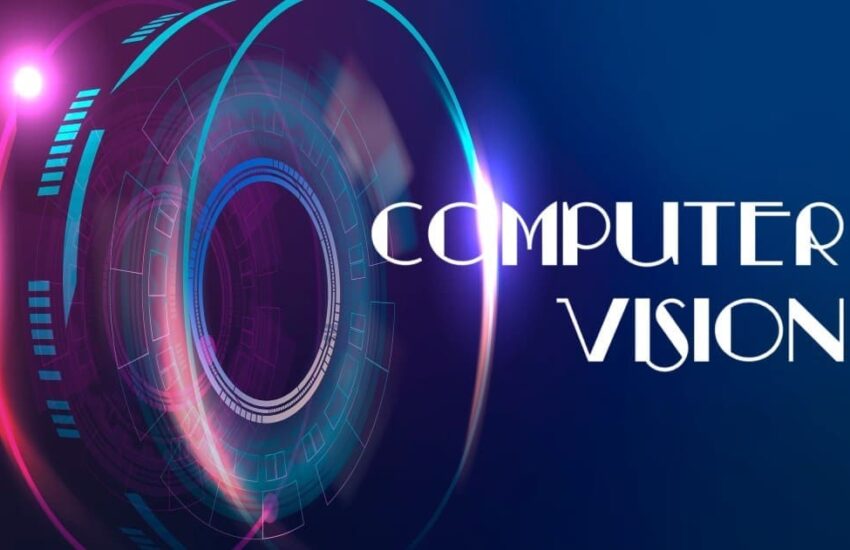
Overview:
Understanding what is Decentralized Finance (DeFi) is about transforming the financial landscape by utilizing blockchain technology to create an open, transparent, and permissionless financial system. Unlike traditional finance, which depends on centralized intermediaries like banks, DeFi operates through decentralized applications (dApps) and smart contracts on blockchain platforms such as Ethereum. This setup allows users to trade, lend, borrow, and more without needing traditional intermediaries, thereby reducing costs and increasing efficiency while democratizing access to financial services for those underserved by conventional banking systems.
The rapid growth of DeFi is driven by increasing awareness, technological advancements, and significant investment from both retail and institutional participants. Key trends such as the rise of decentralized exchanges (DEXs), lending protocols, and the integration of stablecoins highlight DeFi’s innovative nature. Additionally, the potential for DeFi to integrate with traditional financial systems opens new opportunities for seamless value transfer and greater financial inclusion. As the ecosystem evolves, it continues to attract attention and participation, paving the way for a more inclusive, transparent, and efficient global financial system.
Contents:
- What is decentralized Finance (DeFi)
- Key Market Trends of Decentralized Finance (DeFi)
- Key Benefits of Decentralized Finance (DeFi)
- Key Challenges in Decentralized Finance (DeFi)
- Key Applications of Decentralized Finance (DeFi)
- Major Players in Decentralized Finance (DeFi)
- Key Regulatory Framework of Decentralized Finance (DeFi)
- Future Outlook of Decentralized Finance (DeFi)
- Summing Up
So, what is decentralized finance (DeFi)?
Decentralized finance (DeFi) represents an evolving financial technology that disrupts the conventional centralized banking model by granting individuals the ability to engage in peer-to-peer transactions. Leveraging blockchain technology, cryptocurrencies, and smart contracts, DeFi facilitates a range of financial activities, including lending, borrowing, and trading, all without reliance on intermediaries such as banks and traditional financial entities.
Key Market Trends of Decentralized Finance (DeFi):
1. Increased Adoption:
According to Binance, the decentralized finance (DeFi) market saw a revival in the fourth quarter of 2023, with the total value locked (TVL) hitting USD 53 billion, marking a year-over-year growth of approximately 36%. Projected to grow at a compound annual growth rate (CAGR) of 46% from 2023 to 2030, the DeFi market is poised for expansion, with a rise in institutional adoption anticipated. DeFi is experiencing rapid growth and adoption globally, driven by increasing awareness and acceptance of blockchain technology. Both retail and institutional investors are increasingly participating in DeFi, attracted by its potential for high yields and innovative financial products.
2. Technological Innovations:
DeFi is at the forefront of leveraging cutting-edge technologies to create new financial services and products. Key innovations include:
- Smart Contracts: Automated, self-executing contracts that enforce the terms of agreements without the need for intermediaries.
- Decentralized Exchanges (DEXs): Platforms like Uniswap and SushiSwap allow users to trade cryptocurrencies directly with one another without centralized oversight.
- Lending Protocols: Services like Aave and Compound enable users to lend and borrow assets in a decentralized manner, often with more favorable terms than traditional financial institutions.
3. Integration with Traditional Finance:
DeFi is poised to integrate with traditional financial systems, creating a hybrid ecosystem where value can be transferred seamlessly between decentralized and centralized platforms. This integration is expected to enhance liquidity, improve financial inclusion, and offer new opportunities for both DeFi and traditional finance participants.
4. Interoperability:
Interoperability is crucial for the scalability and sustainability of the DeFi ecosystem. Projects like Polkadot and Cosmos are developing protocols and frameworks that facilitate seamless interaction between different blockchains and DeFi platforms. This trend is essential for building a cohesive DeFi environment where diverse applications can operate together efficiently.
5. Tokenization:
Tokenization involves representing real-world assets as digital tokens on the blockchain. This trend is opening up new opportunities for fractional ownership, increased liquidity, and more efficient trading of traditionally illiquid assets like real estate, art, and commodities. Tokenization is broadening the scope of DeFi by enabling users to engage with a wider range of assets.
6. Continuous Innovation:
DeFi is a hotbed of innovation, with new protocols and products being developed continuously. Innovations such as decentralized autonomous organizations (DAOs), decentralized identity solutions, and prediction markets are gaining traction within the DeFi space. These advancements are driving the evolution of DeFi, making it more versatile and robust.
Key Benefits of Decentralized Finance (DeFi):
1. Decentralization:
DeFi eliminates the need for intermediaries such as banks and brokers, thereby reducing costs and increasing efficiency. Operating on decentralized networks ensures that no single entity has control over the system, fostering trust and resilience, and removing central points of failure.
2. Security:
Transactions in DeFi are secured by blockchain technology, which ensures the integrity and transparency of financial transactions. This robust security framework reduces the risk of fraud and unauthorized access, making DeFi platforms a safer option for users.
3. Accessibility:
DeFi provides access to financial services for underserved populations and individuals who lack access to traditional financial systems. It offers financial services to unbanked and underbanked populations worldwide, promoting financial inclusion and economic empowerment.
4. Transparency:
The transparent nature of blockchain technology ensures that all transactions on DeFi platforms are verifiable and immutable. This transparency reduces the risk of fraud and manipulation, as every transaction is recorded on a public ledger that is accessible to everyone.
5. Lower Fees:
By eliminating intermediaries, DeFi platforms can significantly reduce transaction costs for users. This makes financial services more affordable and accessible, allowing users to save money on fees that would otherwise go to banks and other financial institutions.
Key Challenges in Decentralized Finance (DeFi):
1. Regulatory Framework:
DeFi faces significant regulatory challenges as governments and financial institutions grapple with understanding and regulating this new and rapidly evolving financial sector. The regulatory status of DeFi varies by jurisdiction, creating uncertainty for both developers and users. Navigating complex legal frameworks and regulatory requirements is a major challenge for DeFi projects.
2. Scalability:
Scalability remains a significant challenge for DeFi platforms due to the limitations of blockchain technology and the need to handle high transaction volumes. Network congestion and high gas fees, particularly on the Ethereum blockchain, hinder user experience and adoption. Although Layer 2 solutions like Optimistic Rollups and sidechains are being developed, scalability issues continue to pose a barrier to the growth of DeFi.
3. Security Risks:
DeFi transactions are vulnerable to various security risks, including hacking and smart contract vulnerabilities. High-profile incidents such as the DAO hack and the bZx exploit have highlighted the importance of robust security measures. Ensuring the security of DeFi platforms is a continuous challenge, as even small bugs in smart contracts can lead to significant financial losses.
4. User Experience:
The user experience of many DeFi applications is still relatively poor compared to traditional financial services. Complexities such as wallet management, private key security, and understanding of blockchain concepts pose barriers to entry for non-technical users. Improving the user interface and making DeFi more accessible to a broader audience is crucial for its widespread adoption.
Key Applications of Decentralized Finance (DeFi):
1. Decentralized Exchanges (DEXs):
DEXs like Uniswap and SushiSwap enable peer-to-peer trading of cryptocurrencies and other digital assets without the need for a centralized intermediary. These platforms offer users greater control over their funds and lower trading fees compared to traditional centralized exchanges, enhancing privacy and reducing reliance on third parties.
2. Lending Protocols:
DeFi lending protocols such as Compound and Aave facilitate decentralized lending and borrowing of cryptocurrencies and other digital assets. Users can lend their assets to earn interest on idle funds or borrow assets to access liquidity without the need for traditional banks. This system democratizes access to credit and interest-bearing accounts.
3. Stablecoins:
Stablecoins are digital assets pegged to the value of a fiat currency, such as the US dollar. They provide a stable store of value and a medium of exchange, essential for transactions within the DeFi ecosystem. Examples include USDC, DAI, and Tether (USDT), which help mitigate the volatility typically associated with cryptocurrencies.
4. Yield Farming:
Yield farming involves providing liquidity to DeFi protocols in exchange for rewards, often in the form of additional tokens or governance rights. Platforms like Yearn Finance and Curve Finance facilitate yield farming strategies, allowing users to maximize their returns by leveraging various DeFi protocols and pools.
5. Insurance:
DeFi insurance platforms like Nexus Mutual and Cover Protocol offer decentralized insurance coverage against risks such as smart contract failures, hacks, and other vulnerabilities. These platforms provide users with greater security and peace of mind, addressing some of the inherent risks in the DeFi space.
Major Players in Decentralized Finance (DeFi) Ecosystem:
1. Uniswap:
Uniswap is a leading decentralized exchange (DEX) that operates on the Ethereum blockchain. It uses an automated market maker (AMM) model to facilitate token swaps, allowing users to trade ERC-20 tokens directly from their wallets. As one of the most popular DEXs, Uniswap enables peer-to-peer trading of cryptocurrencies and other digital assets without the need for a centralized intermediary, offering users greater control over their funds and lower trading fees.
2. Compound:
Compound is a decentralized lending protocol that allows users to earn interest on deposited assets or borrow assets by collateralizing their holdings. The interest rates on Compound are algorithmically determined based on supply and demand, providing a decentralized and efficient lending market. Compound’s platform supports the decentralized lending and borrowing of cryptocurrencies and other digital assets, democratizing access to financial services.
3. MakerDAO:
MakerDAO is one of the pioneering DeFi projects, responsible for creating the stablecoin DAI and the decentralized governance token MKR. The Maker protocol allows users to generate DAI by collateralizing assets like Ethereum. As a decentralized lending protocol, MakerDAO enables decentralized lending and borrowing of cryptocurrencies and other digital assets, contributing significantly to the DeFi ecosystem’s stability and growth.
4. Aave:
Aave is a decentralized lending and borrowing protocol that supports a wide range of cryptocurrencies and tokens. It introduced innovative features like flash loans, which allow users to borrow assets without collateral as long as the loan is repaid within the same transaction. Aave’s flexibility and broad asset support make it a key player in the DeFi space, providing users with diverse financial services and products.
5. Synthetix:
Synthetix is a decentralized platform for synthetic assets, allowing users to mint and trade synthetic versions of real-world assets like fiat currencies, commodities, and cryptocurrencies. The platform uses the SNX token to collateralize synthetic assets and participate in governance. Synthetix’s ability to bring real-world assets onto the blockchain expands the scope of DeFi, enabling users to engage with a wider range of financial instruments.
These major players are instrumental in driving the growth and innovation within the DeFi ecosystem, each contributing unique services and solutions that enhance the overall functionality and accessibility of decentralized finance.
Key Regulatory Framework of Decentralized Finance (DeFi):
The regulatory landscape for decentralized finance (DeFi) is complex and still evolving, with significant variation across different jurisdictions. This framework encompasses a range of approaches, from progressive and supportive to cautious and stringent, depending on the country and regulatory body involved.
1. SEC Guidance (United States):
The U.S. Securities and Exchange Commission (SEC) has issued guidance emphasizing the need for transparency and compliance with existing regulations in the DeFi space. The SEC scrutinizes DeFi projects to ensure they adhere to securities laws, particularly focusing on whether certain tokens or activities constitute securities offerings. This guidance aims to protect investors and maintain fair, orderly, and efficient markets, but it also poses challenges for DeFi projects striving for compliance while maintaining decentralization.
2. European Union Regulations:
The European Union has implemented several regulatory directives that impact DeFi activities:
Markets in Financial Instruments Directive (MiFID): MiFID regulates trading platforms, investment firms, and other financial entities, ensuring transparency, investor protection, and market integrity. DeFi projects operating within the EU must consider MiFID requirements, particularly if their activities resemble traditional financial services.
Payment Services Directive (PSD2): PSD2 aims to promote innovation and competition in the payment services sector while enhancing security. DeFi platforms offering payment services must comply with PSD2, which includes requirements for strong customer authentication and secure communication.
3. Global Variation in Regulatory Approaches:
Switzerland and Singapore: These countries have adopted progressive approaches to DeFi regulation. Switzerland, known for its crypto-friendly regulatory environment, has provided clear guidelines and support for blockchain and DeFi innovation. Similarly, Singapore has established a supportive framework that encourages growth in the DeFi sector while ensuring regulatory compliance and investor protection.
United States and China: These countries have taken a more cautious approach. In the U.S., regulatory bodies like the SEC and the Commodity Futures Trading Commission (CFTC) closely monitor DeFi projects for compliance with existing laws. China has implemented strict regulations, including bans on cryptocurrency trading and initial coin offerings (ICOs), significantly limiting the scope of DeFi activities within its borders.
Future Outlook of Decentralized Finance (DeFi):
1. Increased Adoption:
DeFi is set for significant growth in adoption as awareness of its benefits and potential continues to spread among individuals and institutions. The increasing familiarity with blockchain technology and the advantages of decentralized finance—such as greater control over assets, reduced reliance on intermediaries, and potential for higher yields—are likely to drive more users and investors into the DeFi ecosystem. As educational initiatives and user-friendly interfaces improve, DeFi is expected to become more accessible to a broader audience, further accelerating adoption.
2. Technological Innovations:
The future of DeFi will be shaped by ongoing technological innovations. Key areas of development include:
Artificial Intelligence (AI) and Machine Learning (ML): These technologies can enhance DeFi platforms by providing advanced analytics, predictive modeling, and automated decision-making processes. AI and ML can improve risk management, optimize trading strategies, and personalize financial services for users.
Internet of Things (IoT): IoT devices can interact with DeFi platforms to enable real-time data sharing and transactions. This integration can facilitate the creation of new financial products and services that leverage IoT data, such as dynamic insurance policies and real-time asset tracking.
Enhanced Security Protocols: Continuous advancements in blockchain technology and cryptography will enhance the security and reliability of DeFi platforms, addressing existing vulnerabilities and reducing the risk of hacks and exploits.
3. Existing Finance Integration:
DeFi is expected to increasingly integrate with traditional financial systems, creating a hybrid ecosystem where value can be seamlessly transferred between decentralized and centralized platforms. This integration will bring several benefits:
Improved Liquidity: The merging of DeFi with traditional finance will enhance liquidity by bridging the gap between digital and fiat assets, making it easier for users to move between different financial systems.
Broader Financial Inclusion: By combining the strengths of both systems, DeFi can extend financial services to underserved populations and provide more inclusive financial solutions.
Institutional Participation: Traditional financial institutions are likely to adopt DeFi technologies to streamline operations, reduce costs, and offer innovative products to their clients. This participation will bring greater legitimacy and stability to the DeFi market.
4. Regulatory Evolution:
As DeFi continues to grow, regulatory frameworks will evolve to provide clearer guidelines and standards. Regulatory clarity will help mitigate risks, protect consumers, and foster a more sustainable and trustworthy DeFi ecosystem. Collaboration between regulators, industry stakeholders, and the DeFi community will be crucial in developing regulations that balance innovation with investor protection and market integrity.
5. Expansion of Use Cases:
The range of applications for DeFi is expected to expand, encompassing more sophisticated financial products and services. Potential future use cases include:
Decentralized Insurance: More comprehensive and customizable insurance products that leverage DeFi’s transparency and efficiency.
Real Estate Tokenization: Broader adoption of tokenizing real estate assets to facilitate fractional ownership and improve liquidity in the real estate market.
Supply Chain Finance: Integration of DeFi with supply chain management to provide real-time financing options and improve transparency in the supply chain.
Summing Up:
In conclusion, DeFi stands at the forefront of financial innovation, offering a decentralized alternative to traditional finance that is more inclusive, transparent, and efficient. By leveraging blockchain technology, DeFi eliminates the need for intermediaries, providing users with greater control over their financial activities and assets. The rapid adoption and investment in DeFi underscore its potential to reshape the global financial landscape, offering new opportunities for individuals and institutions alike.
Looking ahead, the future of DeFi holds immense promise. As technological innovations continue to drive the development of new financial products and services, DeFi is expected to become even more accessible and integrated with traditional finance. Regulatory frameworks will evolve to provide clearer guidelines, fostering greater trust and legitimacy in the DeFi ecosystem. With its ability to empower individuals, promote financial inclusion, and foster innovation, DeFi is poised to play a pivotal role in shaping the future of finance on a global scale. As we navigate this evolving landscape, collaboration between regulators, industry stakeholders, and the DeFi community will be essential to ensure the continued growth and sustainability of decentralized finance.












5 thoughts on “What is Decentralized Finance (DeFi) in the Era of Digital Finance”